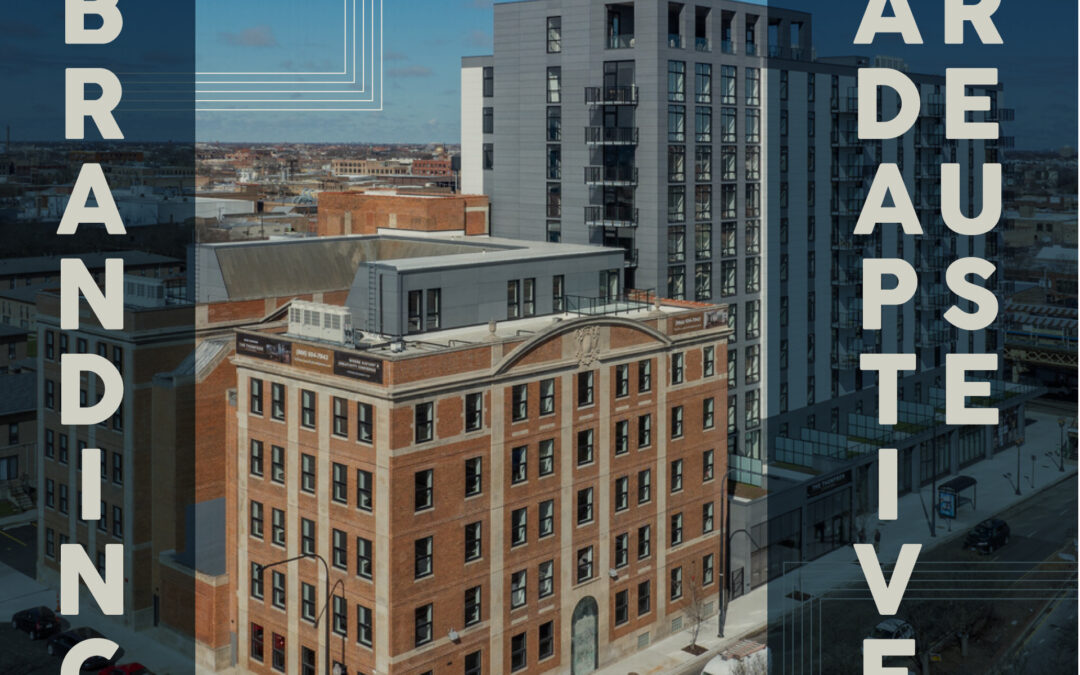The advent of adaptive reuse multifamily developments is now.
But what is adaptive reuse—and why is it suddenly popular? Adaptive reuse is redevelopment that takes an existing structure and adapts it for another use. In multifamily developments, this can look like a partially remodeled historic hospital converted into a mid-rise apartment community. (The project also employed new ground-up development.) Adaptive reuse has become more popular thanks to its sustainable ideals—reusing existing structures is practical both financially and ecologically.
Mark Twain is often attributed with saying, “Buy land, they’re not making it anymore.” This can go two ways—use what you have or buy up more land. But…
“Use what you have” is behind this movement. That idea can also, luckily, be applied to branding—use the history of the building to create a brand story that will capture your residents.
Adaptive Reuse: Multifamily
Adaptive reuse for multifamily holds a few benefits over new construction in its ability to appeal to the newest wave of prospects along with residential developers—if you play it right.
AFTER SAVING TIME AND MONEY
By taking an existing building, you might avoid pouring footings, foundations, structural bits and (sometimes) masonry. This could cut down on construction time, allowing you to open for leasing sooner. Those same footings, foundations, and structural pieces that you’re not building could also save you some money.
Remodeling and renovating certainly have costs associated (think rezoning, or a possible need to gut the building), but depending on the condition of the building you’re adapting to reuse, your multifamily community could be sitting in a comfier place. Any construction savings could be funneled into beautiful branding and over-the-top amenities to draw your residents in.
APPEAL TO GEN Z
Speaking of drawing residents in, the next wave of renters is here. Time to brand your multifamily community for Gen Z. The reasons Gen Z would like a space aligns pretty closely with how adaptive reuse functions:
Eco-friendly – Taking what’s already there will cut down on fossil fuels needed—if you start from scratch, you’re redoing work that didn’t need to be done.
Sustainable: Cities are getting more crowded with population growth as well as housing prices ever outpacing income levels. Going up instead of sprawling out makes sense. And using buildings that exist will be faster and more sustainable than building brand-new.
Meaning behind the Multifamily community: What was the building before? A hotel? A hospital? A school? Taking a building that’s served a separate purpose and using it for housing offers up so much meaning to a segment of prospective residents—meaning that deep is hard to resist.
APPEAL TO RESIDENTIAL DEVELOPERS
Remember when we talked about 2024 trends in multifamily? Was adaptive reuse on your bingo card?
“Adaptive reuse will be an ongoing build and design trend in 2024,” says Esther Sperber, founder and CEO of ST Architects. “It is more sustainable to reuse existing structures than building from the ground up. Reusing old warehouses, factories, etc., will continue to appeal to residential developers in 2024 and beyond.”
Traditional, new construction might take more time and more money to create. A residential developer is interested in how urban dwellers will interact with the space—because they’re the end-user. And when Gen Z is interested in sustainability and meaning, adaptive reuse fits the bill and makes more sense as an investment.
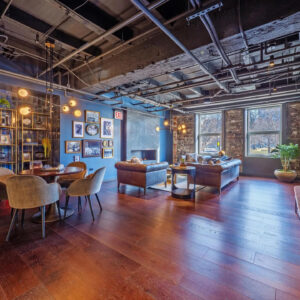
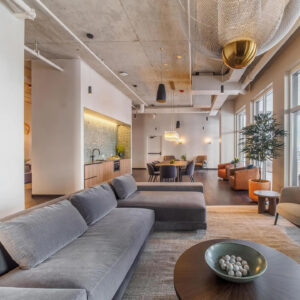
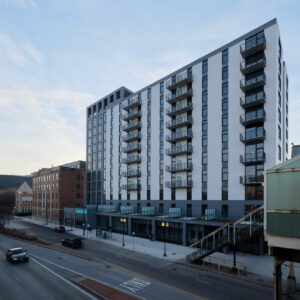
History—the STORY behind the Brand
Meaning. It has to come from somewhere, whether it’s created, or simply needs to be tapped into. With adaptive reuse multifamily buildings, it’s not drawn out of the ether. It comes with the territory! The story is in the walls, lived a thousand different ways already. Finding the piece that connects with your ideal resident is what you’re missing. When you find it, draw it out into the branding (using it as the structure for your brand both literally and figuratively.)
TELL THE STORY OF ITS HISTORY
Telling the story you’ve uncovered in the building can enrapture your audience—your ideal resident. Learn more about the building’s previous use. Get information on the history. Identify the building’s architectural style. Read up on the current events of its hey-day. Use everything you can to create the story of your building’s brand.
Now, select the highlights of those historical elements and tie them into your branding. Architecture can inform the brand style. History can inform your amenity names. Your logos, your signage, everywhere your brand appears, you can take inspo from the building’s history. Be choosy with what you’re diving into—not everything is viable to be public-facing. But go deep and find out everything you can, so you have enough to go off of.
This is especially true of your apartment’s name. Find a name that can work with the history, not conflict with it, or ignore it. Lean in, and create intrigue. And when your residents do move in, give them a gift that goes with the building. Old hotel? Give them a hotel style keychain. Old school? Give them some branded No. 2 pencils. Previous warehouse? Do a giveaway based on what used to be produced or stored there.
STORYTELLING
Continue the thread through your community’s content and copy. Your tagline, headlines, mission, vision, values. Your website copy—this is where you storytelling gets to draw on history. While it doesn’t write itself, the structure is there, just like the building. The best part about using history to tell the story is the creativity and authenticity. When drawing inspiration from an actual place in the past, one can connect with the ideal residents to create a brand that’s never been seen before, and will never be seen again!
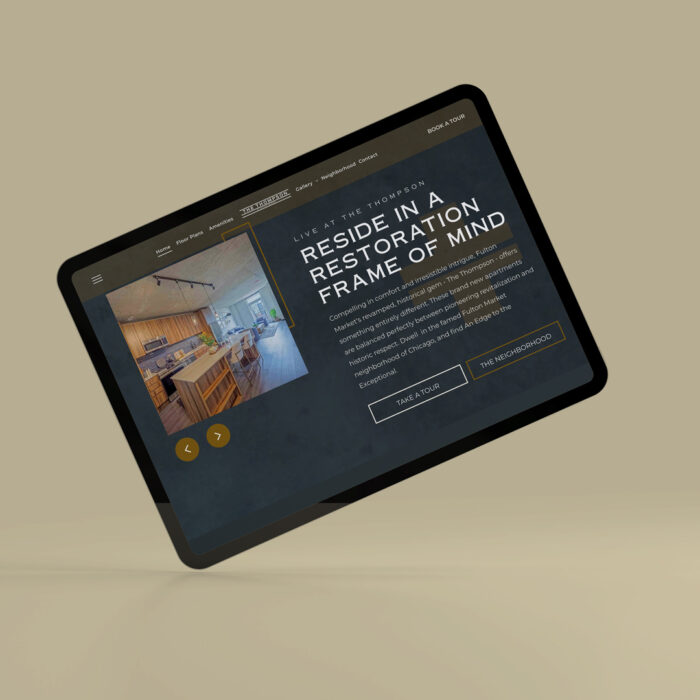
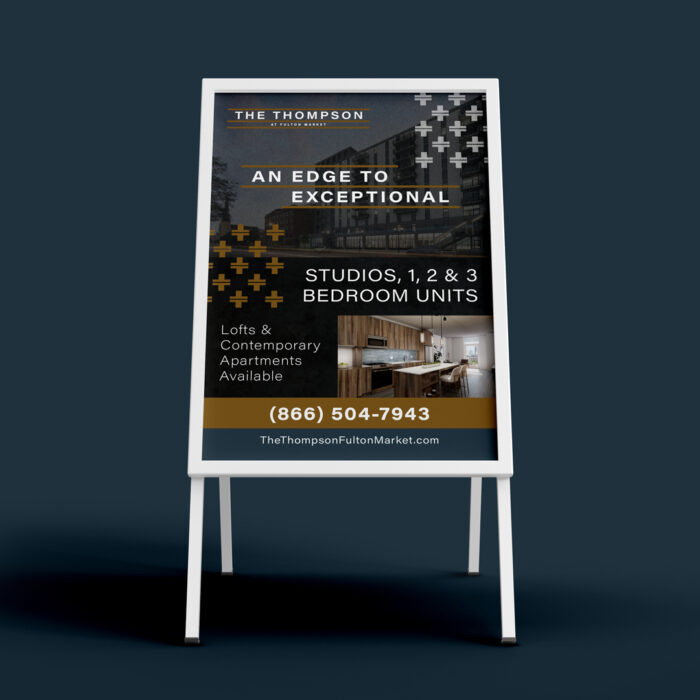
Brand Vibe and Personality
How does one capture the vibe and personality of a historical building? What if it was a warehouse? Ask deeper, bigger questions: What time period was the building built in? When was it in use? What kinds of items did it store? Who worked there, and were there any stories told about them? What major events happened when it was open and functional? (Wars? Riots? Parades? World fairs?)
ADAPTIVE REUSE BRANDING EXAMPLE
Rather than continuing to talk about the how and why, let’s break for recess, and take a look at an example.
Ivywild, a Colorado Springs marketplace with eats, drinks, and shops, is housed in an elementary school that closed in 2009. The communal atmosphere that developed was supported by the neighborhood, especially because it maintained a historic facade and revitalized a structure that could have otherwise stood empty, or worse, become a public eyesore. Our favorite part? “The Principal’s Office” cocktail bar. Clever. The school’s roman-columned facade is part of the logomark. One of the restaurants was housed in a short yellow school bus out front.
Though this is an adjacent industry, the multifamily realm could just as easily rise to the occasion, to bring historical buildings back into the limelight. (Take inspiration where you can get it!)
Why Adaptive Reuse Multifamily Branding?
We’re very much of the thought that you should brand everything. When it comes to adaptable reuse, this is the best possible opportunity for a brand—it’s fun, intriguing and has an outline already. The history is there, waiting for you to spin it into a yarn. Getting creative with it, no one will have the same story as you. Adaptive reuse in multifamily could be the next big thing. Save money, save time, attract GenZ-ers, appeal to residential developers, and be a little greener.
Build it and they will come?
More like: Adapt it and they will come.
Reach out to Zipcode Creative: Storytelling experts with copywriting that converts and branding that beautifies.

